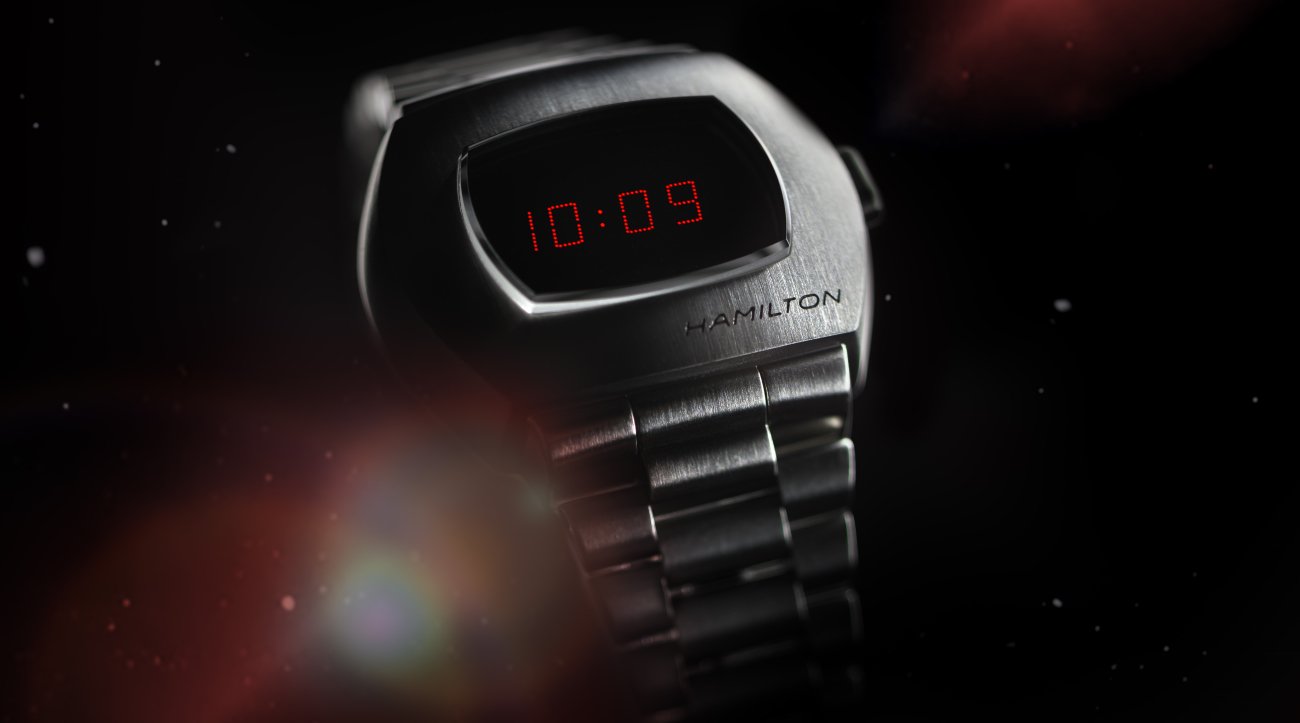ay 6, 1970 stands as one of the most significant moments in wristwatch history. At a press conference in The Four Seasons restaurant in New York City, Hamilton revealed to the world the very first digital electronic wristwatch. Named the Pulsar after the pulsating neutron stars that emit beams of radiation at ultra-precise frequencies, this seemed an object straight out of science fiction, with no moving parts, no ticking sound, and unmatchable durability and accuracy.

But the science was real. This ingenious ‘solid state wrist computer’, developed by Hamilton in its hometown of Lancaster, Pennsylvania, would change the way we tell time. An entire new genre in timekeeping was born.
With the new Hamilton PSR, the brand is powering up this icon of 1970s style and technology once more. There are two versions of the PSR to choose from: one in stainless steel, and a version in stainless steel coated with yellow gold PVD that’s limited to 1,970 models. Both watches feature cases in the inimitable wide cushion style of the P2, with the same dimensions of 40.8mm x 34.7mm. The watches are water resistant to 10 bar (100m). Just as it was then, the PSR remains the epitome of cool and a watch for those wanting to make a statement.
One of the differences with the previous version is the display of time. The Hamilton PSR features a hybrid display mixing reflective LCD (Liquid Crystal Display) and emissive OLED (Organic Light Emitting Diodes) technologies. Pressing the button will once again bring up light red OLED numerals in the familiar ‘digit dot’ style, while the LCD display ensures that the time is also permanently visible in daylight conditions. With no backlight, the display has very low energy consumption.









